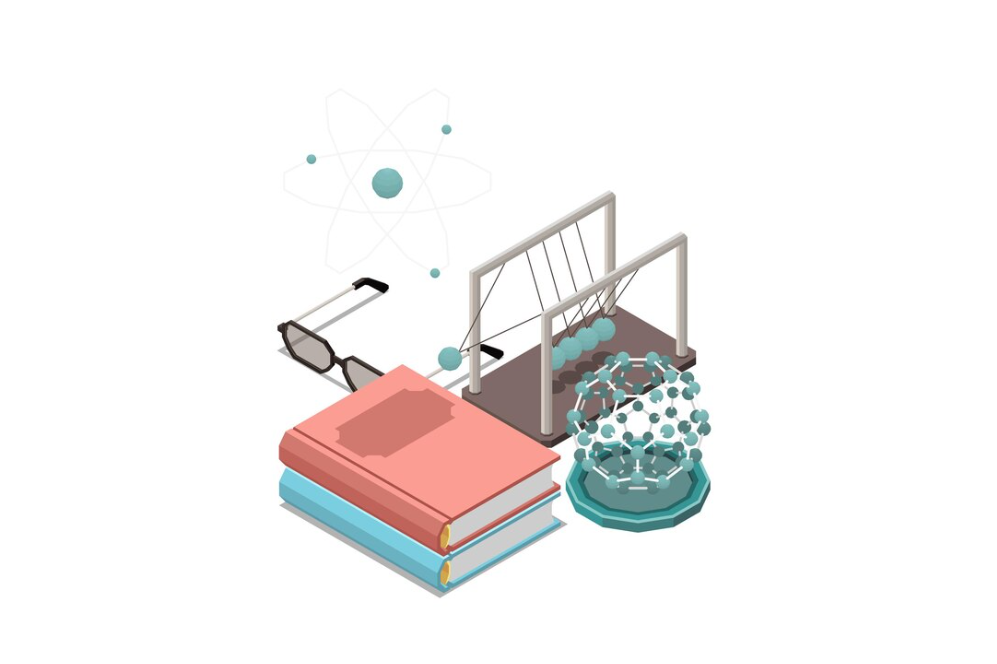
Book clubs offer an excellent avenue for bonding with fellow enthusiasts, participating in enriching conversations and exploring the nuances of a book’s themes and characters. If you seek insightful inquiries to ignite dialogue around the newest literary sensation, “Lessons In Chemistry” by Bonnie Garmus fits the bill perfectly. This compelling narrative traces the path of Elizabeth Zott, a chemist maneuvering through the challenges of a predominantly male scientific realm during the 1960s.
9 Captivating Facts: ‘Lessons In Chemistry’ for Your Club
Before we jump into our book club discussion on “Lessons In Chemistry,” let’s explore nine fascinating facts about the book that are sure to ignite your interest and set the stage for an engaging conversation:
- The story draws inspiration from the life of Stephanie Kwolek, the chemist behind the invention of Kevlar, a revolutionary synthetic fiber known for its use in bulletproof vests;
- Bonnie Garmus, the author, lends her own experience as a chemist to the narrative, offering a genuine and insightful look into the protagonist’s journey in the science field, which is predominantly male;
- Set against the backdrop of the 1960s, the novel delves into the era’s dynamic social shifts, spotlighting the struggle for gender equality in professional environments;
- Elizabeth Zott, the novel’s central character, is portrayed as a tenacious and gifted chemist who navigates through numerous setbacks and barriers in her quest for scientific achievement;
- Through its narrative, the book addresses critical themes such as gender bias, perseverance, and the relentless pursuit of one’s aspirations despite facing resistance;
- The book has been celebrated by critics and readers alike for its incisive humor, engaging narrative style, and well-developed characters;
- It provides an intriguing peek into the realm of scientific innovation and exploration, alongside a personal look at the challenges and victories involved in a STEM career;
- With a masterful blend of humor, emotional depth, and insightful observations, Garmus’s debut novel connects with a wide audience, sharing a story that is both thought-provoking and deeply moving.
“Lessons In Chemistry” is recommended for anyone interested in stories about resilience, ambition, and the unwavering strength needed to surmount obstacles, making it an ideal pick for diverse readers and book clubs.
Discussing ‘Lessons in Chemistry’

Delving into “Lessons in Chemistry,” this guide aims to broaden your understanding and spark engaging conversations within your book club. It invites members to explore the intricate layers of themes, character development, and narrative arc presented in the novel. The questions are designed not only to uncover the essence of Elizabeth’s journey as a trailblazing female chemist in the 1960s but also to reflect on the broader implications of her story in today’s context.
- Consider the impact of the 1960s setting on Elizabeth’s career and life opportunities. How do the historical context and societal norms of the time frame both challenge and shape her path as a woman in science?;
- Explore the significance of gender dynamics and discrimination in Elizabeth’s narrative. How do these elements define her professional journey and personal battles within a predominantly male scientific community?;
- Analyze the influence of Elizabeth’s mentorship with Dr. Kendrick on her evolution both professionally and personally. How do their interactions and relationship contribute to her development and challenges?;
- Draw connections between Elizabeth’s individual battles in the scientific arena and the wider socio-political movements of the 1960s. How do her experiences mirror or diverge from the broader struggles for equality and recognition during that era?;
- Examine the expression of resilience and determination in Elizabeth’s character. How are these qualities reflected in her ambitions, challenges, and responses to adversity throughout the story?;
- Discuss the compromises and sacrifices Elizabeth makes in her quest for scientific achievement. Consider the impact of these decisions on her interpersonal relationships and self-identity;
- Delve into the novel’s critique of conventional gender roles and expectations. How does the narrative challenge and redefine the boundaries for women in science and beyond?;
- Investigate the role of humor within the novel. How does it enhance the portrayal of Elizabeth’s character and her navigation through various trials and tribulations?;
- Reflect on the portrayal of science and discovery in “Lessons in Chemistry.” How does the novel underscore the transformative power of scientific pursuit and innovation in influencing lives and broadening horizons?
As you and your fellow book club members delve into these inquiries and beyond, you’ll find yourselves immersed in vibrant discussions, exchanging a myriad of viewpoints, and enhancing your understanding of the intricate tapestry woven by the themes and characters in “Lessons In Chemistry.” Whether you possess a passion for science, a fascination with history, or an appreciation for compelling narratives, this novel promises to enthrall and ignite your imagination.
‘Lessons In Chemistry’: A Book Club Discussion Guide

Let’s wrap up this discussion by exploring several commonly asked questions and their corresponding answers that could arise during your book club meeting:
What inspires Elizabeth to embark on a career in chemistry?
Answer: Elizabeth’s drive stems from her profound love for science and her aspiration to make a significant impact in the realm of chemistry.
How does Elizabeth confront the obstacles of being a woman in a predominantly male field?
Answer: Elizabeth employs her intellect, humor, and unwavering resolve to surmount hurdles and demonstrate her value within the scientific community.
What is Dr. Kendrick’s role in Elizabeth’s life and professional journey?
Answer: Dr. Kendrick acts as a mentor, advocate, and occasional challenger to Elizabeth, offering guidance, encouragement, and tough feedback as necessary.
How does Elizabeth manage the balance between her career aspirations and personal life?
Answer: Elizabeth grapples with finding harmony between her professional ambitions and her connections with family, friends, and romantic interests.
What personal sacrifices does Elizabeth make to pursue her scientific endeavors?
Answer: Elizabeth sacrifices personal relationships, financial stability, and even her own well-being at times in pursuit of her passion for chemistry.
How does the novel address themes of gender discrimination and workplace inequality?
Answer: “Lessons In Chemistry” sheds light on the entrenched biases and obstacles that women encounter in male-dominated fields, advocating for equality and systemic change.
What themes of resilience and perseverance are evident in the narrative?
Answer: Elizabeth’s journey is punctuated by setbacks, trials, and moments of uncertainty, yet she remains steadfast in her determination to realize her aspirations, showcasing resilience and perseverance.
In what ways does the novel delve into the intersections of science, feminism, and societal change?
Answer: “Lessons In Chemistry” illustrates how scientific advancements can serve as a catalyst for broader social progress, highlighting the transformative potential of women’s contributions to STEM disciplines.
What insights can readers glean from Elizabeth’s narrative?
Answer: Elizabeth’s journey imparts invaluable lessons on bravery, perseverance, and the significance of pursuing one’s passions and beliefs, regardless of the obstacles encountered.
What significance does Elizabeth’s scientific work hold for both the scientific community and society as a whole?
Answer: Elizabeth’s pioneering research and breakthroughs carry the potential to reshape the landscape of chemistry and enhance the well-being of countless individuals globally.
How does the novel challenge conventional gender norms and stereotypes?
Answer: “Lessons In Chemistry” dismantles preconceptions surrounding women in STEM domains, underscoring that intellect, skill, and ambition transcend gender boundaries.
Where can readers find moments of humor and light-heartedness within the narrative?
Answer: Amidst the weighty themes and trials Elizabeth faces, the novel offers glimpses of wit, humor, and humanity, imbuing the story with depth and levity.
How does the societal landscape of the 1960s influence the narrative and characters in the book?
Answer: Set against the backdrop of the turbulent 1960s, the novel’s storyline is intricately woven with the societal shifts, political unrest, and cultural movements of the era, shaping the motivations, decisions, and interactions of its characters.
In what ways do Elizabeth’s challenges resonate with the broader feminist movement of the 1960s?
Answer: Elizabeth’s journey parallels the struggles of countless women during the 1960s, echoing their quest for equality, acknowledgment, and empowerment in fields and societies traditionally dominated by men.
How does Elizabeth’s personal evolution unfold throughout the narrative?
Answer: From her initial aspirations as an earnest young scientist to her eventual growth into a resilient and seasoned individual, Elizabeth’s character development reflects a transformative journey navigating the complexities and trials inherent in her chosen path.
What themes of ambition, achievement, and contentment are explored in the storyline?
Answer: “Lessons In Chemistry” delves into the multifaceted exploration of ambition, success, and fulfillment, underscoring the importance of aligning personal passions with one’s aspirations to achieve genuine happiness and fulfillment.
How does the novel’s conclusion leave readers contemplating Elizabeth’s future and her impact on the world?
Answer: With its poignant and open-ended resolution, the novel prompts readers to reflect on the legacy of Elizabeth’s choices and contributions, leaving them to ponder the lasting reverberations of her work and her mark on the world.
Conclusion
“Lessons In Chemistry” stands as a compelling and thought-provoking novel poised to ignite vibrant discussions, profound contemplations, and genuine connections within your book club circle. Through delving into the intricate themes, compelling characters, and dynamic plotlines of this absorbing narrative, you and your fellow readers will uncover a deeper appreciation for the nuanced array of ideas and emotions skillfully interwoven by Bonnie Garmus in her debut masterpiece. So gather your companions, brew a pot of tea, and immerse yourselves in the immersive world of “Lessons In Chemistry” for an unforgettable book club journey that promises to leave you inspired, enlightened, and eagerly anticipating future literary explorations.